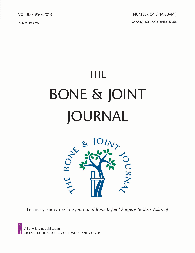
ARTHROPLASTY
Patient-specific cutting guides comparable with conventional instrumentation in TKR
This report has been verified
by one or more authors of the
original publication.
Bone Joint J. 2013 Mar;95-B(3):354-9. doi: 10.1302/0301-620X.95B3.29903
80 patients were randomized to undergo either patient-specific cutting guides (PSCGs) or conventional instrumentation total knee arthroplasty to compare the accuracy of limb alignment and component positioning between these two techniques. Post-surgical radiographs, perioperative time, blood loss and need of transfusion showed no significant differences in tibiofemoral angle or femoral component alignment. PSCG’s angle alignment was closer to neutral with shorter operating time, but these results were not clinically relevant.
Unlock the full ACE Report
You have access to {0} free articles per month.Click below to unlock and view this {1}
Unlock NowCritical appraisals of the latest, high-impact randomized controlled trials and systematic reviews in orthopaedics
Access to OrthoEvidence podcast content, including collaborations with the Journal of Bone and Joint Surgery, interviews with internationally recognized surgeons, and roundtable discussions on orthopaedic news and topics
Subscription to The Pulse, a twice-weekly evidence-based newsletter designed to help you make better clinical decisions
Exclusive access to original content articles, including in-house systematic reviews, and articles on health research methods and hot orthopaedic topics
Or upgrade today and gain access to all OrthoEvidence content for just $1.99 per week.
Already have an account? Log in


Subscribe to "The Pulse"
Evidence-Based Orthopaedics direct to your inbox.
{0} of {1} free articles
Become an OrthoEvidence Premium Member. Expand your perspective with high-quality evidence.
Upgrade Now













































































